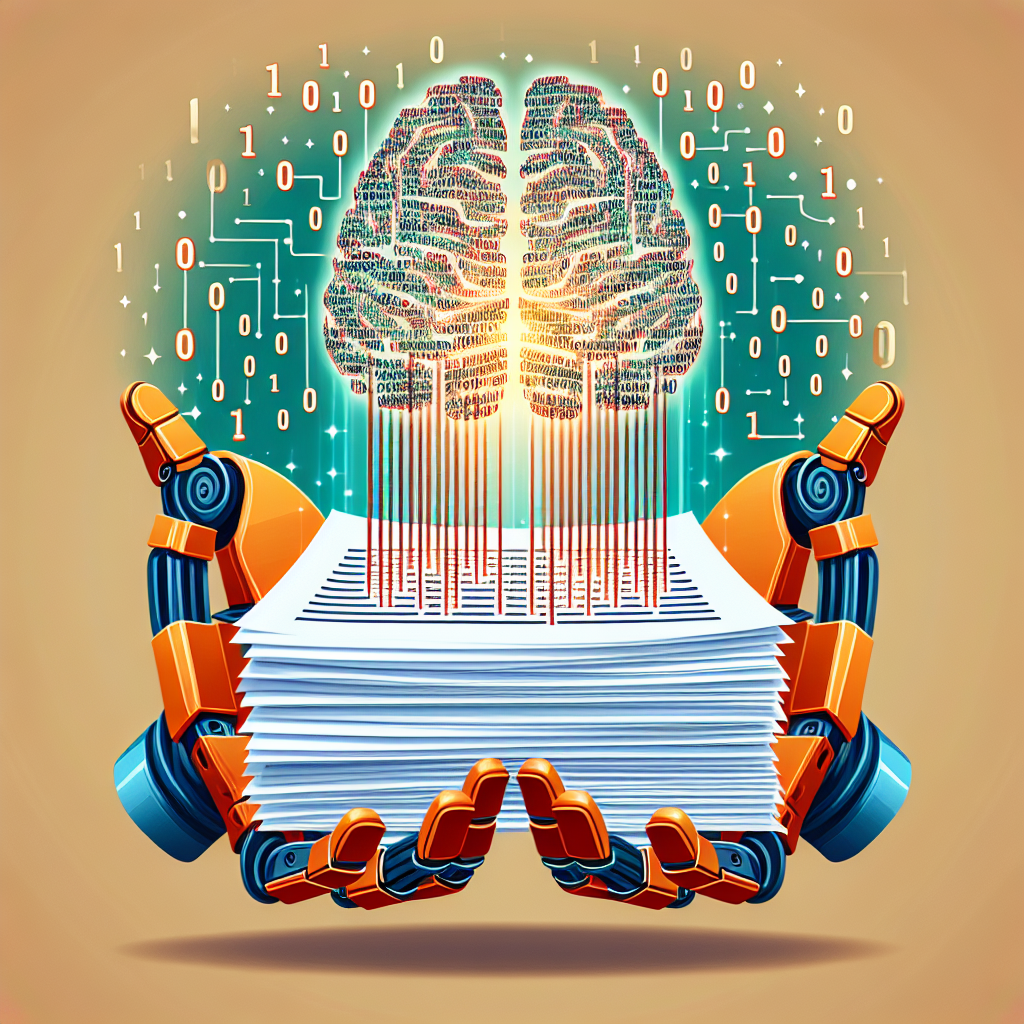Natural Language Processing (NLP) is a branch of artificial intelligence that focuses on the interaction between computers and humans through natural language. The goal of NLP is to enable computers to understand, interpret, and generate human language in a way that is both meaningful and useful.
Text understanding is a key application of NLP, as it involves the analysis and comprehension of text data to extract relevant information. This process involves several tasks such as text classification, information extraction, sentiment analysis, and language translation.
Text classification is the process of categorizing text data into predefined categories or labels based on its content. This is useful for tasks such as spam detection, sentiment analysis, and topic identification. Information extraction involves identifying and extracting specific information from text data, such as named entities, relationships, and events. Sentiment analysis is the process of determining the sentiment or emotion expressed in text data, such as positive, negative, or neutral. Language translation is the process of converting text from one language to another.
NLP for text understanding utilizes a variety of techniques and algorithms to process and analyze text data. Some common techniques include:
1. Tokenization: This involves breaking down text data into individual words or tokens. This is the first step in the text processing pipeline.
2. Part-of-speech tagging: This involves identifying the grammatical components of each word in a sentence, such as nouns, verbs, and adjectives. This information is useful for tasks such as text parsing and syntactic analysis.
3. Named entity recognition: This involves identifying and classifying named entities in text data, such as people, organizations, and locations. This is useful for information extraction tasks.
4. Word embedding: This involves representing words as numerical vectors in a high-dimensional space. This is useful for tasks such as text similarity and language modeling.
5. Topic modeling: This involves identifying the underlying topics or themes in a collection of text data. This is useful for tasks such as text summarization and document clustering.
NLP for text understanding has a wide range of applications across various industries. Some common applications include:
1. Customer support: NLP can be used to automate customer support processes by analyzing and responding to customer queries in real-time.
2. Information retrieval: NLP can be used to build search engines that retrieve relevant information from large volumes of text data.
3. Social media analysis: NLP can be used to analyze social media posts and comments to extract insights about consumer sentiment, preferences, and trends.
4. Healthcare: NLP can be used to analyze medical records, patient feedback, and research papers to improve healthcare outcomes and patient care.
5. Legal: NLP can be used to analyze legal documents, contracts, and court rulings to automate legal research and document review processes.
Despite its many benefits, NLP for text understanding also faces several challenges. Some common challenges include:
1. Ambiguity: Natural language is often ambiguous and context-dependent, making it difficult for computers to accurately interpret and understand text data.
2. Data quality: NLP models require large amounts of high-quality training data to learn and generalize effectively. Poor data quality can lead to inaccurate and biased results.
3. Domain-specific knowledge: NLP models may struggle to understand text data from specialized domains or industries that require domain-specific knowledge or terminology.
4. Scalability: NLP models can be computationally intensive and require significant resources to train and deploy, making scalability a key concern.
5. Ethical considerations: NLP models can inadvertently perpetuate biases and stereotypes present in the training data, leading to ethical concerns about fairness and transparency.
FAQs:
1. What is the difference between NLP and text mining?
NLP and text mining are related fields that both involve the analysis of text data. NLP focuses on the interaction between computers and human language, with a focus on understanding, interpreting, and generating natural language. Text mining, on the other hand, focuses on extracting patterns, trends, and insights from text data using statistical and machine learning techniques.
2. What are some popular NLP libraries and tools?
Some popular NLP libraries and tools include NLTK (Natural Language Toolkit), spaCy, Stanford CoreNLP, Gensim, and Transformers. These libraries provide a range of functionalities for text processing, analysis, and modeling.
3. How can I get started with NLP for text understanding?
To get started with NLP for text understanding, you can begin by learning the basics of text processing and analysis, such as tokenization, part-of-speech tagging, and named entity recognition. You can then explore popular NLP libraries and tools to build and deploy NLP models for text understanding tasks.
4. What are some challenges in NLP for text understanding?
Some common challenges in NLP for text understanding include ambiguity in natural language, data quality issues, domain-specific knowledge requirements, scalability concerns, and ethical considerations related to bias and fairness.
In conclusion, Natural Language Processing (NLP) for text understanding is a powerful technology that enables computers to analyze, interpret, and generate human language. By leveraging NLP techniques and algorithms, organizations can extract valuable insights from text data to improve decision-making, automate processes, and enhance user experiences. Despite its challenges, NLP for text understanding continues to advance rapidly, driving innovation across various industries and applications.

